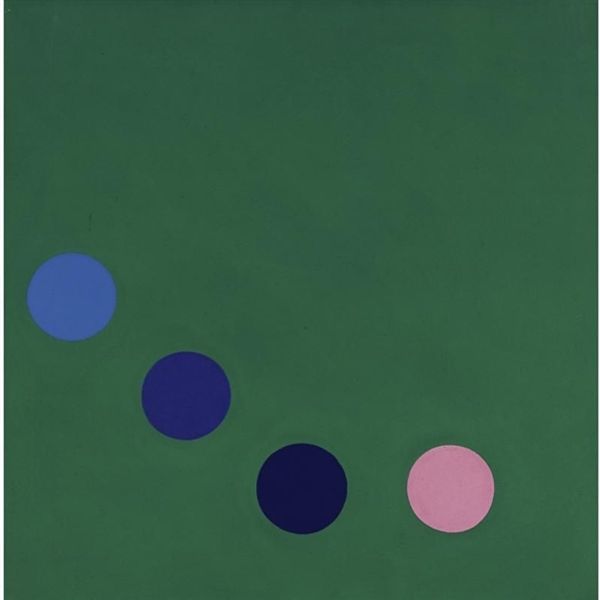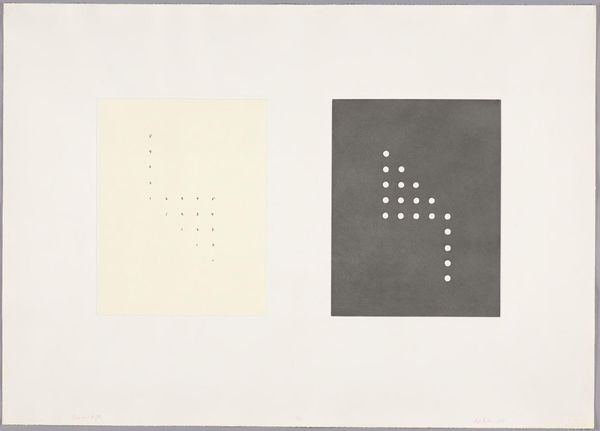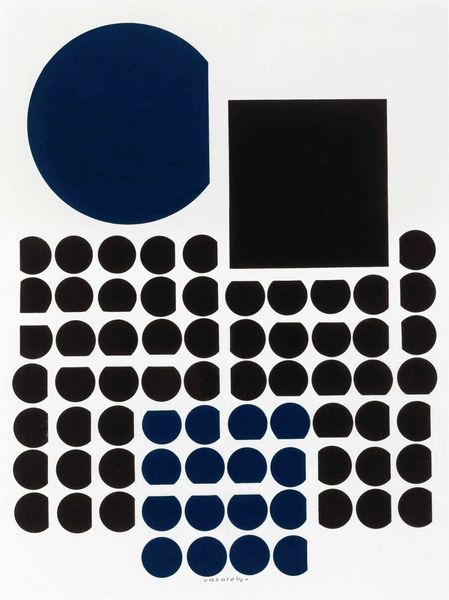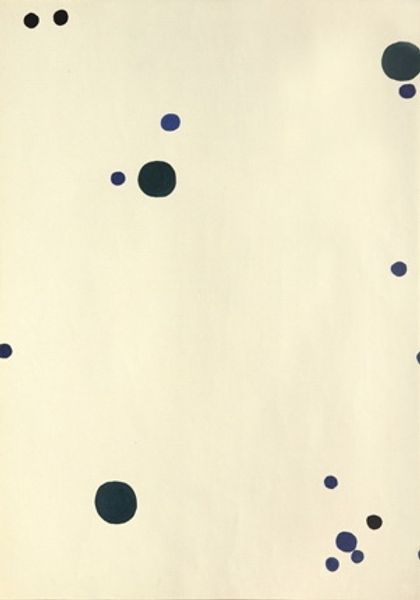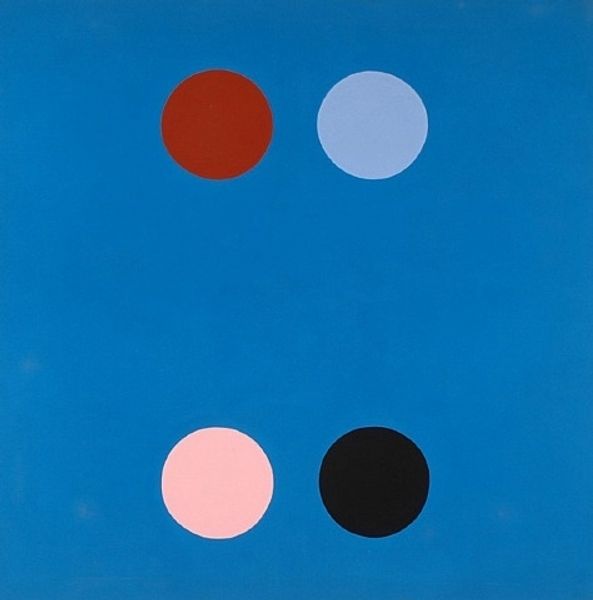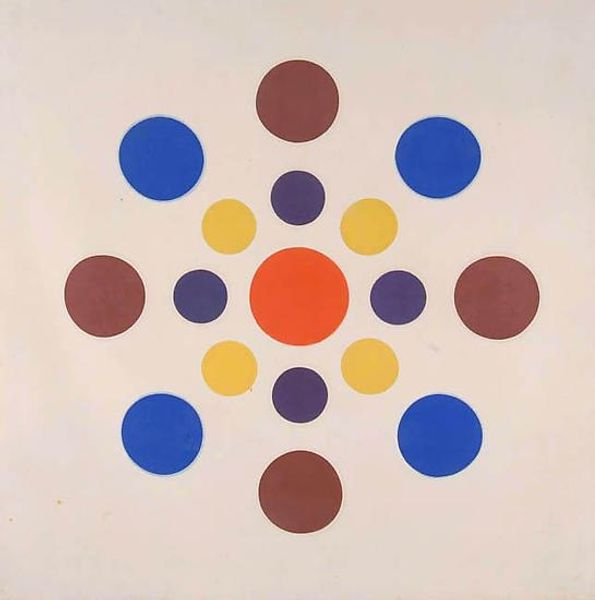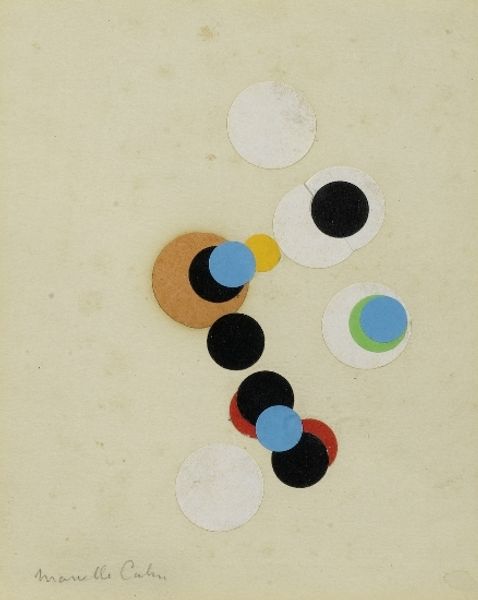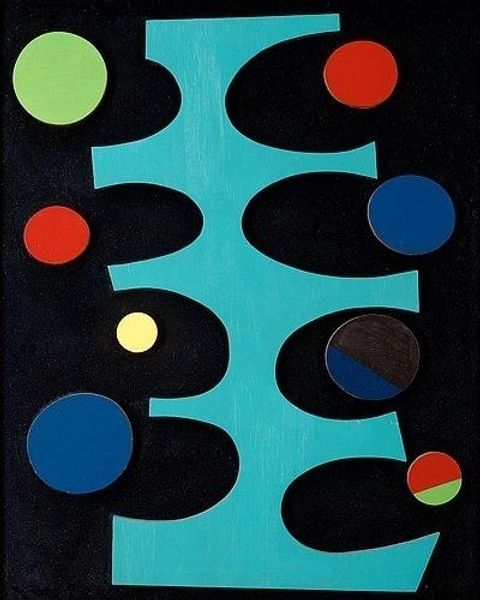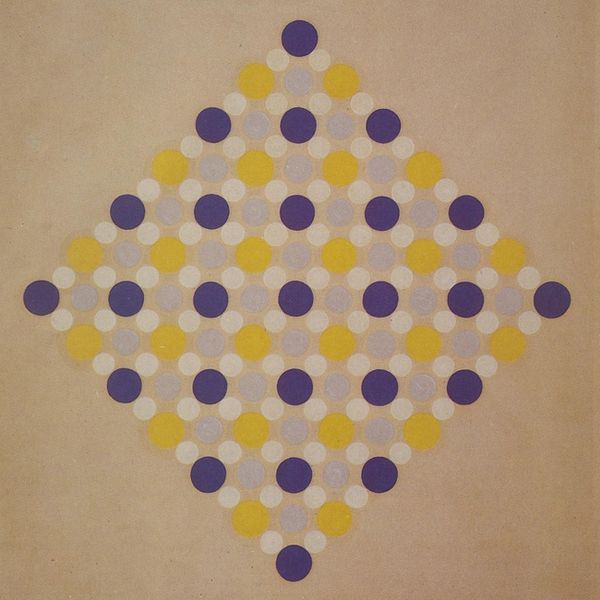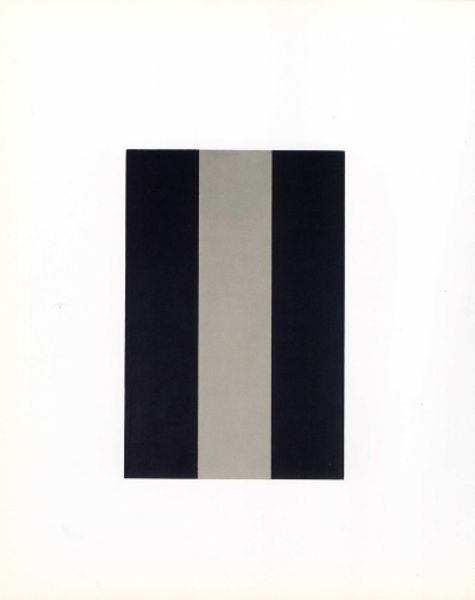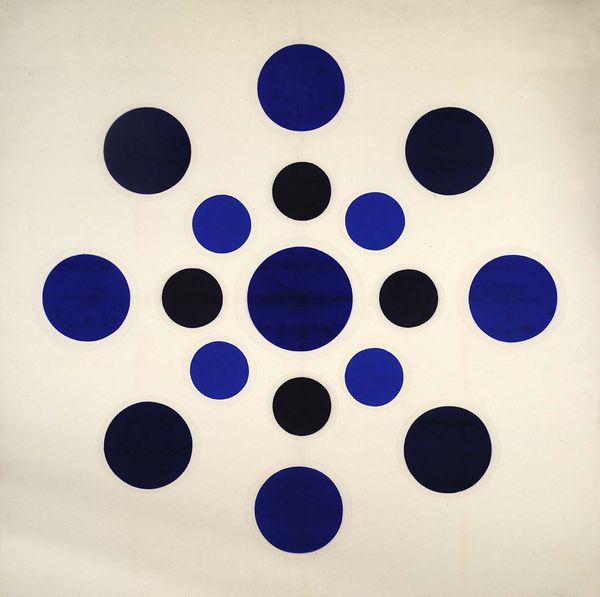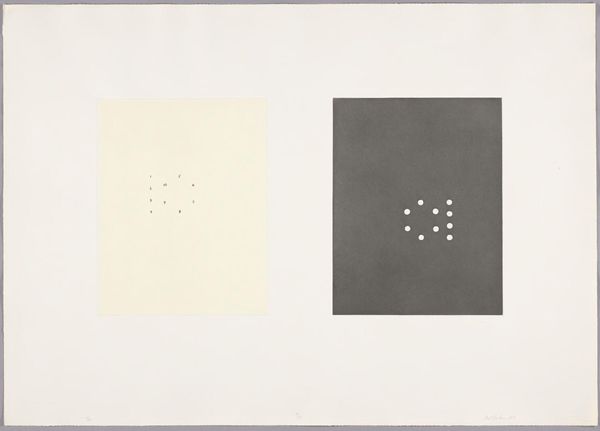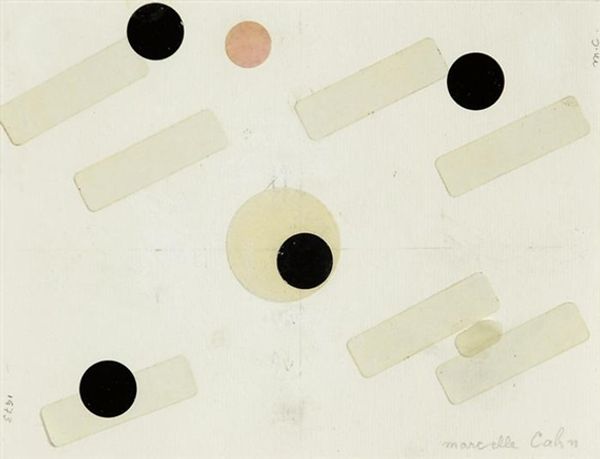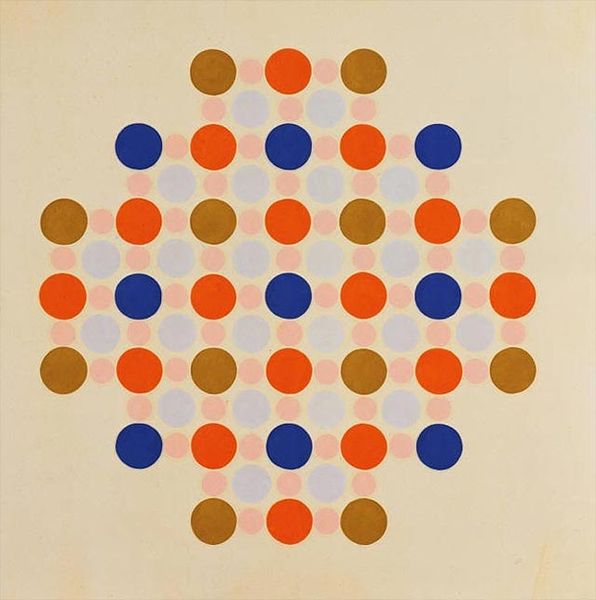
Copyright: Thomas Downing,Fair Use
Curator: It feels remarkably serene, doesn't it? Almost like a minimalist totem pole, very cleanly executed. Editor: We’re looking at "Tsivory," a 1972 painting by Thomas Downing. It features a vertical line of large colored circles, each ringed by four smaller white circles. Quite characteristic of his hard-edge painting style and explorations in Color Field. Curator: Color Field, yes, but I’m also drawn to the implied labor. It may appear simple, but think of the precision involved. The crisp edges, the uniform application of paint, the calculated spacing. These things indicate skilled labor and mindful choices in production, resisting traditional hierarchies separating the fine from the decorative arts. Editor: Downing worked in Washington, D.C. during the rise of the Washington Color School. How do you view that connection? This seems to reflect a shift away from Abstract Expressionism's angst-ridden gesture to something more cool and planned. "Tsivory" could even be considered a critique of emotional brushwork, repositioning the gallery away from male subjectivity to something more systemic. Curator: Interesting point! He transforms commercial acrylics and raw canvas into aesthetic forms; that systematic rigor you mentioned speaks volumes about accessible processes of production and engagement. Were Downing and his peers explicitly commenting on accessible artistic practices at that moment? Editor: Well, many critics interpreted this formal reduction as a reflection of social order. The very act of repetition is part of that framework. Curator: Though repetitive and simplified, these forms create space for interaction as visuality— how does your viewing shift between shades, lines, and how are forms affected in an ever-increasingly manufactured experience of imagery and material? The industrial implications are interesting. Editor: Exactly, thinking about industrial and political influences reveals nuances. By painting these dots with flat and almost impersonal applications of colour, "Tsivory" participates in a larger artistic dialogue about imagery that had, until that time, been reserved for the few, displayed in very specific art institutions. Downing creates a sense of order on one level, yet that visual tension and accessible repetition allow for something fresh to appear, in almost defiant opposition. Curator: I agree! Looking closer at the making here is fascinating because of this combination and conflict! Editor: The history provides a solid grounding to what we see!
Comments
No comments
Be the first to comment and join the conversation on the ultimate creative platform.
